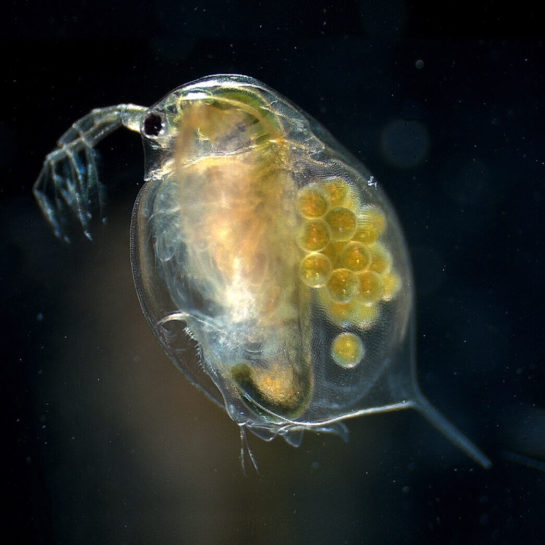Daphnia, zooplancton for the adult zebrafish
The 3R principle is designed to improve the welfare of experimental animals, including zebrafish. As such, zooplankton alone can provide a number of solutions such as the enrichment it represents, and nutritional intake improving the health status of zebrafish.
If our production of rotifers for larval and juvenile zebrafish (5 to 60 days after fertilization) respects this principle, the challenge remains important for adult zebrafish (60 days or more). In this sense, the timeline of our nutritional solutions makes it possible to visualize the live zooplankton feedings proposed at each stage.
Our recent advances in the production of daphnia seek to respond to this challenge. So far, feeding for this phase of the zebrafish life is, for many laboratories, generally ensured by artemia. At a size of 200 μm, rotifers remain too small. But, since the production of Artemia in the laboratory is not controlled, their use causes problems especially because of the ecological imbalance that it is likely to generate. In addition, since the brine shrimps are harvested in the wild, their use presents biohazards risks that may affect experiments conducted with zebrafish fed on this type of zooplankton.
We seek to control the culture of daphnia to avoid these pitfalls. The culture protocol we are aiming for is also based on another advantage of this planktonic specie: its life in freshwater, like the zebrafish. Unlike Artemia (marine organism) which dies after a few minutes in fresh water, Daphnia provides an environment that more sustainably stimulates zebrafish. A lasting enrichment of its environment which allows us to improve its well-being and to approach a refinement in the use of this animal model: the 3rd R of the principle.

